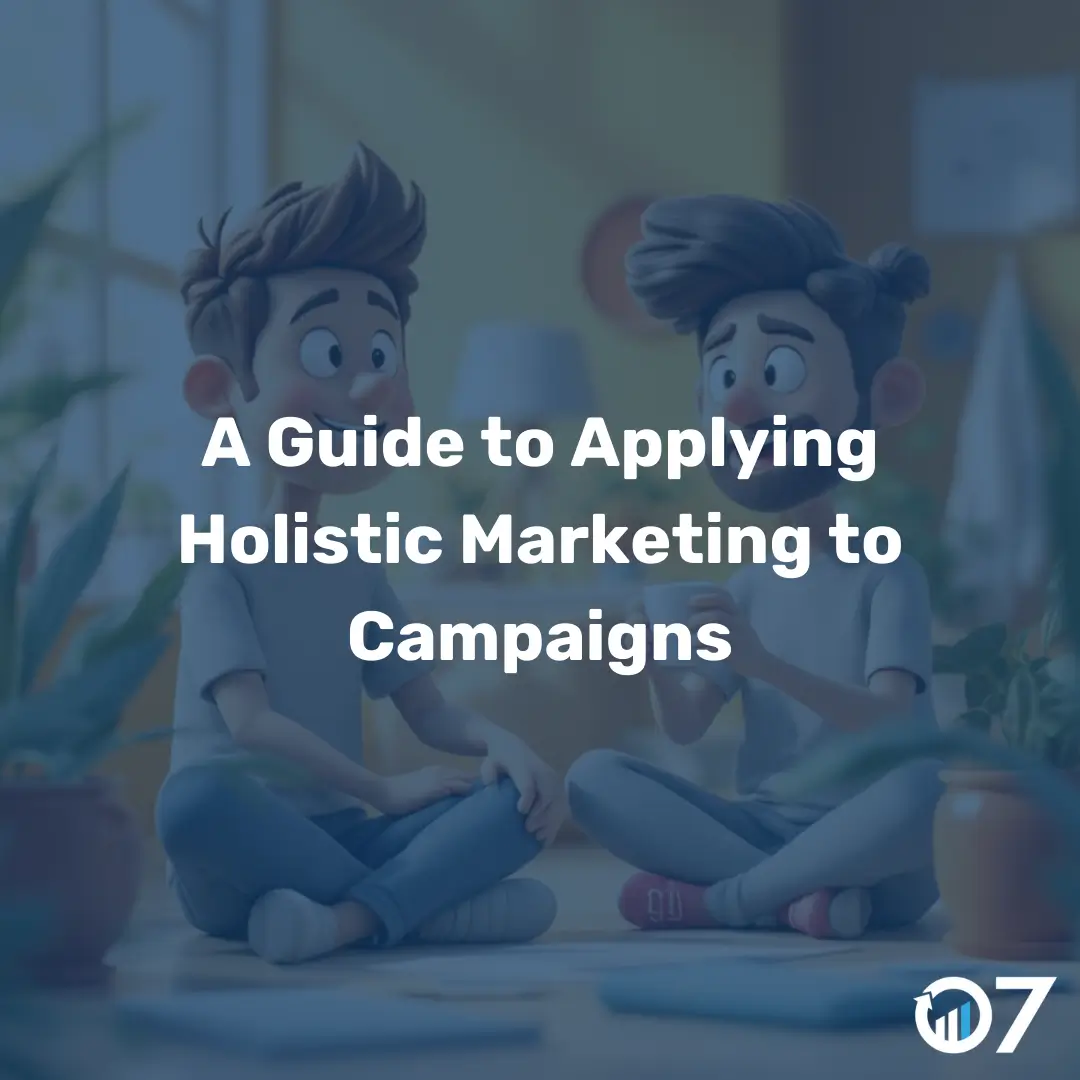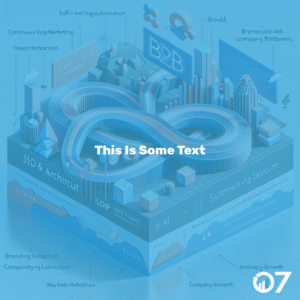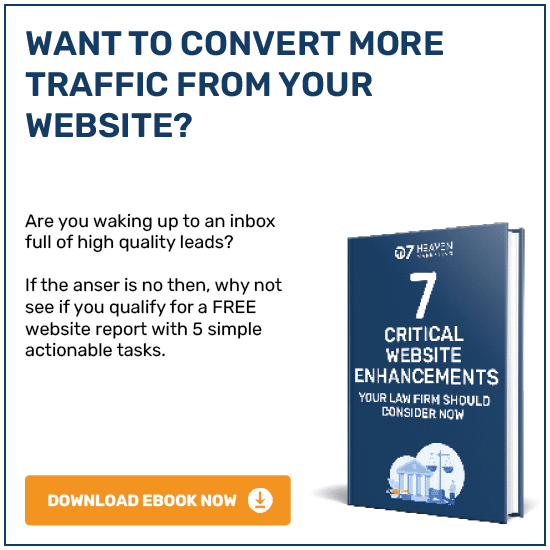Applying holistic marketing to campaigns can revolutionise your business approach. Learn how to integrate this strategy for a seamless brand experience.
The marketing function keeps expanding, as Deloitte’s Spring 2024 CMO Survey confirmed. Marketing must help all departments and the entire company achieve its goals.
That’s one of the many benefits holistic marketing offers. When we free marketing from swim lanes, we invite others to participate and own marketing’s principles and outcomes. Marketing then becomes a guide, directing customers, partners, and employees into a comprehensive, unified brand experience.
But first, you must understand holistic marketing’s history, application, and implications. Let’s chat about how this approach can help you accomplish more with your campaigns.
What is Holistic Marketing?
For a long time, companies divided operations into discrete business units. Marketing, sales, customer support, product development: each department was accountable to the company but operated within its own walls.
Those departmental lines have been blurring, with marketing at the forefront. Many of you are familiar with the call to align sales and marketing into smarketing.
Other departments are leaning on marketing to help them:
- Attract more prospects
- Inform and educate potential customers
- Entice customers to renew and upgrade
- Provide a consistent, high-quality customer experience
Central to these needs is serving the customer. The key to “holistic marketing” lies in understanding how you, as a marketing leader, can influence how your entire company interacts with customers.
The term “holistic marketing” gained popularity mainly from the efforts of esteemed marketing professor Philip Kotler. He defines it as “shaping an experience for the customer that goes beyond the product.”
Kotler further defines holistic marketing’s key pillars:
- Internal marketing that gets everybody — from the intern to the CEO — embracing marketing principles
- Integrated marketing that uses many channels and creative outlets to communicate your value proposition
- Relationship marketing that champions your customers and marketing partners
- Performance marketing that analyses returns on marketing investment and contextualises marketing activities amid legal, ethical, social, and environmental factors
In this vein, you see how holistic marketing is part of the customer experience (CX) a company delivers. CX’s purview is the overall experience a customer has with a brand. A holistic marketing strategy focuses more on how marketing activities influence that experience.
What Does Holistic Marketing Look Like in Practice?
To answer this question, I talked with Allison Nordenbrock Brown, founder of Norden Marketing. She provides fractional CMO services to B2B technology and professional services companies.
“I would define holistic marketing as an approach that takes all potential marketing channels into consideration,” she said. “Instead of deeply focusing on one channel because it‘s ‘what’s been done,’ holistic marketers instead consider how all of these channels have performed historically within the company to guide future direction.”
Those potential marketing channels cover any place that could influence a customer’s brand perception, including:
- Traditional marketing like TV, radio, out-of-home advertising
- Digital marketing like SEO, email, and social media
- PR and earned media
- Direct sales conversations and promotions
- Customer support like call centers, chatbots, and social media support
- Experiential and event marketing
- Corporate social responsibility efforts
- Internal marketing to employees
Consider a brand like Apple from this holistic perspective. Maybe you bought an iPhone recently. No doubt you saw an ad on TV or reviewed a landing page through a sponsored link — that’s certainly marketing’s work.
But what happens after buying the device?
Every post-purchase event also falls under Apple’s marketing umbrella. From the design of the device unpacking process to offering in-store Genius Bars for support, you can feel Apple’s brand. It’s a uniform, seamless brand experience. That’s the feeling you’re trying to emulate with a holistic marketing approach.
Benefits of Holistic Marketing
Look how many avenues marketers have to think about in a holistic marketing approach. Is all that work worth it? Let’s investigate holistic marketing’s benefits.
Improves Customer Experience
Customers crave a seamless experience like Apple provides. And they notice when you don’t deliver.
Salesforce’s latest State of the Connected Customer report found that “79% of customers expect consistent interactions across departments, yet 55% say it generally feels like they’re communicating with separate departments rather than one company.”
A well-executed holistic marketing approach helps companies deliver a uniform brand experience. With a defined core message and approach shared across every business function, every customer receives an experience that accurately reflects your company.
Increases Company Revenue
Naturally, better customer experiences likely mean customers want to stay and spend more with you. The uniform brand presence a la Apple can help you generate more revenue. Brand management tool Marq found that “consistent brand presentation across all platforms can increase revenues by up to 23%.”
Increases Internal Team Effectiveness
A holistic approach offers significant internal benefits, too. Brown offers an example familiar to any marketer: sales asking marketing to quickly spin up a new deck to wow a large prospect.
In a traditional marketing setup, “marketing is annoyed,” says Brown. “They already made a deck. Why is this an emergency now? They become overwhelmed and frustrated that they didn’t know about this need sooner. Why isn’t the existing deck good enough?”
Holistic marketing allows marketers to operate more proactively. With this approach, marketing can communicate with sales, take ownership, and get things done.
“In a holistic marketing department, sales and marketing meet on a regular basis and talk about their goals and activities,” says Brown.
“Sales is targeting more large enterprise clients. Marketing asks about their needs in advance. Sales shares that the current deck isn’t resonating as well with enterprise prospects. Sales and marketing develop a deck together while sales are ramping up their efforts. Once sales land a meeting, the deck is ready to go, and everyone is less stressed.”
How to Apply a Holistic Marketing Approach
Whether you’re a one-person marketing team or run marketing for a global enterprise, you can benefit from adopting a more holistic approach. How do you get started?
1. Set Your Goals and High-Level Strategy
Before you dive into developing an incredible, highly detailed holistic marketing plan, ponder the basics:
- What do you want to accomplish?
- What do you expect to need to do that?
- Who should be in your corner to do it?
- How do you think you’ll integrate everything?
Write a memo to yourself detailing answers to these questions. You want to build buy-in before investing considerable time and resources into holistic marketing.
Create the high-level roadmap to achieve your goal, which will help others see the direction you want and where they can support you.
2. Align Internal Teams
With a brief in hand, start building consensus among other departments. Sales is your first and most important champion. They benefit the most from your holistic approach, and you’ll want them on your team.
Just like how a salesperson builds a logical and emotional case for their prospects, you should approach them similarly. Demonstrate why they should care about a holistic approach. Find case studies and examples from other companies.
Lean on the benefits this will offer customers (and those prospects sales wants to close). It’s not about making marketing better; it’s about how marketing can make everybody better.
After convincing sales, consider other customer-facing departments like customer support or product development and design. Invite teams who influence how customers experience your company’s product or service.
3. Determine Details Like Messaging, Channels, and SOPs
With buy-in on the plan’s goals and high-level strategy, you can then develop the details to bulk up your holistic marketing approach.
Within your plan, establish:
- Goals, objectives, and metrics
- Core customer-centric messaging
- Brand voice, tone, and style guides
- Channels to use to manage customer relationships
- Standard operating procedures (SOPs) on how to run holistic marketing campaigns
- Clear lines of accountability and authority (consider building a RASCI matrix)
Pro tip: Make sure your messaging reflects your authentic voice. Customers can sniff out a phony. Social content marketing firm Stackla reports that “88% of consumers say authenticity is important when deciding which brands they like and support.”
Provide enough details so that your non-marketing peers can embrace marketing’s principles and act accordingly. For instance, user- or employee-generated content can be especially valuable in providing the authenticity customers crave.
A clear guide can help employees produce great content — and help you avoid mishaps like Chick-fil-A’s treatment of its employee whose food videos went viral on TikTok.
4. Monitor Metrics and Adjust
Remember, a holistic marketing strategy touches upon more than a traditional strategy does. Accordingly, you’ll need to track more than the typical sets of metrics. Additional KPIs worth tracking include:
- Customer satisfaction
- Brand awareness
- Employee engagement
These data points are more qualitative; get creative in how you gather and use these data. For instance, use post-purchase engagement surveys to determine Net Promoter Scores (NPS). This will help you benchmark customer engagement and track qualitative progress.
If you want extra help completing your plan’s details, check out our guide to building a high-quality marketing strategy and plan.
3 Tips for a Strong Holistic Marketing Strategy
You’ve seen holistic marketing’s benefits, and you’re working to integrate marketing operations and engage other departments.
As you execute strategy and build your coalition, Brown offers a few tips to nail this significant operational overhaul.
1. Question Everything
A holistic marketing strategy takes a broader way of thinking to execute well. You have to look past the regular channels, spot unorthodox opportunities, and act upon them. As a result, marketers cannot sit back and go with the status quo.
“Traditional marketing departments will often get stuck in a loop of ‘this is how it‘s always been, this is what we’ve always done,” Brown said.
“But, holistic marketers look at the marketing strategy from a lens of ‘Should we be doing this?’ and ‘Is this driving the right outcomes for our company?’ When your approach becomes holistic, you’ll take your marketing efforts from reactive to proactive.”
2. Always Be Communicating
Building something new requires getting everyone bought into the concept and excited about potential outcomes. It’s a question of relationships within your company. And like growing any relationship, communication is key.
As marketing takes a more holistic approach, Brown reminds you to keep everyone apprised of progress.
“By communicating that marketing is testing multiple channels to determine how they can all work together simultaneously, departments will be more understanding when marketing is no longer as reactive to their needs,” she said. “Their needs are already being met with proactive planning and communication.”
3. Track a Unified Goal
Holistic marketing generates lots of data, and it’s tricky to help everyone remember the most important insights.
UX designers may recognise this challenge as Miller’s Law: Longstanding research shows most people can hold about seven pieces of information in their minds at once. UX designers have tried many ways to circumvent this limitation, such as “chunking” content to make it digestible and memorable.
Like designers, marketers need to chunk data into high-level, manageable insights. Cross-department communication gets complicated quickly.
Marketers should take the lead and focus teams’ attention on what’s most important with a unified goal.
Brown agrees with this strategy. “All channels should still be measured individually, but a successful holistic strategy will move the needle for the unified goal,” she said. “That goal should be understood across all departments. Whether it’s to grow recurring revenue in a single line of business, or drive new subscribers, a holistic strategy will drive toward the unifying goal from all angles.”
Pro tip: Use our marketing plan template to lay the foundation for your holistic marketing approach. You’ll receive templates to set your strategies, channels, and technology.
Take Proactive Steps to Incorporate Holistic Marketing
Consumers are picky about their brand relationships. If they don’t find what they’re looking for with you, they’ll go elsewhere. And the best brands that consumers stay with offer a fulfilling, seamless brand experience.
Applying Holistic Marketing to Campaigns Conclusion
The successful future marketer will need to not only think holistically but also develop cross-department relationships to grow marketing’s influence.
A holistic marketing approach can help you tap into the various resources scattered throughout your organization.
With a proactive mindset, deep appreciation of your customers, and strong interdepartmental relationships, you can bake a clear vision into every marketing campaign and accomplish unified organizational goals.
For more insights and expert tips, visit our blog or contact us via email at info@07hm.co.uk or telephone 01702 410663.





